JAJSDE5 June 2017
PRODUCTION DATA.
- 1 特長
- 2 アプリケーション
- 3 概要
- 4 改訂履歴
- 5 Pin Configuration and Functions
- 6 Specifications
- 7 Detailed Description
- 8 Application and Implementation
- 9 Power Supply Recommendations
- 10Layout
- 11デバイスおよびドキュメントのサポート
- 12メカニカル、パッケージ、および注文情報
6 Specifications
6.1 Absolute Maximum Ratings(1)(2)
| Supply voltage | ±18 V |
| Differential input voltage | ±30 V |
| Input voltage range(1) | ±15 V |
| Output short circuit duration(2) | Continuous |
| Storage temperature, Tstg | –65 to 150°C |
(1) Stresses beyond those listed under Absolute Maximum Ratings may cause permanent damage to the device. These are stress ratings only, which do not imply functional operation of the device at these or any other conditions beyond those indicated under Recommended Operating Conditions. Exposure to absolute-maximum-rated conditions for extended periods may affect device reliability.
(2) Refer to RETS442X for LF442MH military specifications.
(1) Unless otherwise specified the absolute maximum negative input voltage is equal to the negative power supply voltage.
(2) Any of the amplifier outputs can be shorted to ground indefinitely, however, more than one should not be simultaneously shorted as the maximum junction temperature will be exceeded.
6.2 Absolute Maximum Ratings(1)(2)
| LMC0008C Package | P0008E Package | ||
|---|---|---|---|
| TJ max | 150°C | 115°C | |
| Operating temperature range | See(4)(3) | See(4)(3) | |
| Lead Temperature (Soldering, 10 sec.) | 260°C | 260°C | |
(1) Stresses beyond those listed under Absolute Maximum Ratings may cause permanent damage to the device. These are stress ratings only, which do not imply functional operation of the device at these or any other conditions beyond those indicated under Recommended Operating Conditions. Exposure to absolute-maximum-rated conditions for extended periods may affect device reliability.
(2) Refer to RETS442X for LF442MH military specifications.
6.3 Recommended Operating Conditions
over operating free-air temperature range (unless otherwise noted)| MIN | NOM | MAX | UNIT | ||
|---|---|---|---|---|---|
| Supply voltage | ±15 | V | |||
6.4 Thermal Information
| THERMAL METRIC(1) | LF442-MIL | UNIT | |||
|---|---|---|---|---|---|
| LMC (TO) | P (PDIP) | ||||
| 8 PINS | 8 PINS | ||||
| RθJA (Typical) | Junction-to-ambient thermal resistance | 400 linear feet/min air flow | 65 | 114 | °C/W |
| Static air | 165 | 152 | |||
| RθJC (Typical) | Junction-to-case thermal resistance | 21 | °C/W | ||
(1) For more information about traditional and new thermal metrics, see the Semiconductor and IC Package Thermal Metrics application report.
6.5 DC Electrical Characteristics(1)(2)
| PARAMETER | TEST CONDITIONS | MIN | TYP | MAX | UNIT | ||
|---|---|---|---|---|---|---|---|
| VOS | Input offset voltage | RS = 10 kΩ, TA = 25°C | 1 | 5 | mV | ||
| Over temperature | 7.5 | mV | |||||
| ΔVOS/ΔT | Average TC of input offset voltage | RS = 10 kΩ | 7 | μV/°C | |||
| IOS | Input offset voltage | VS = ±15 V(1)(3) | TJ = 25°C | 5 | 50 | pA | |
| TJ = 70°C | 1.5 | nA | |||||
| TJ = 125°C | nA | ||||||
| IB | Input bias current | VS = ±15 V(1)(3) | TJ = 25°C | 10 | 100 | pA | |
| TJ = 70°C | 3 | nA | |||||
| TJ = 125°C | nA | ||||||
| RIN | Input resistance | TJ = 25°C | 1012 | Ω | |||
| AVOL | Large signal voltage gain | VS = ±15 V, VO = ±10 V, RL = 10 kΩ, TA = 25°C |
25 | 200 | V/mV | ||
| Over temperature | 15 | 200 | V/mV | ||||
| VO | Output voltage swing | VS = ±15 V, RL = 10 kΩ | ±12 | ±13 | V | ||
| VCM | Input common-mode voltage range |
±11 | 14 | V | |||
| −12 | V | ||||||
| CMRR | Common-mode rejection ratio | RS ≤ 10 kΩ | 70 | 95 | dB | ||
| PSRR | Supply voltage rejection ratio | See(4) | 70 | 90 | dB | ||
| IS | Supply current | 400 | 500 | μA | |||
(1) Unless otherwise specified, the specifications apply over the full temperature range of VS = ±15 V for the LF442-MIL. VOS, IB, and IOS are measured at VCM = 0.
(2) Refer to RETS442X for LF442-MIL MH military specifications.
(3) The input bias currents are junction leakage currents which approximately double for every 10°C increase in the junction temperature, TJ. Due to limited production test time, the input bias currents measured are correlated to junction temperature. In normal operation the junction temperature rises above the ambient temperature as a result of internal power dissipation, PD. TJ = TA + θJAPD where θJA is the thermal resistance from junction to ambient. Use of a heat sink is recommended if input bias current is to be kept to a minimum.
(4) Supply voltage rejection ratio is measured for both supply magnitudes increasing or decreasing simultaneously in accordance with common practice from ±15 V to ±5 V for the LF442-MIL.
6.6 AC Electrical Characteristics(1)(2)
| PARAMETER | TEST CONDITIONS | MIN | TYP | MAX | UNIT | |
|---|---|---|---|---|---|---|
| Amplifier to amplifier coupling | TA = 25°C, f = 1 Hz-20 kHz (Input referred) | −120 | dB | |||
| SR | Slew rate | VS = ±15 V, TA = 25°C | 0.6 | 1 | V/μs | |
| GBW | Gain-bandwidth product | VS = ±15 V, TA = 25°C | 0.6 | 1 | MHz | |
| en | Equivalent input noise voltage | TA = 25°C, RS = 100 Ω, f = 1 kHz | 35 | nV/√Hz | ||
| in | Equivalent input noise current | TA = 25°C, f = 1 kHz | 0.01 | pA/√Hz | ||
(1) Unless otherwise specified, the specifications apply over the full temperature range and for VS = ±15 V for the LF442-MIL. VOS, IB, and IOS are measured at VCM = 0.
(2) Refer to RETS442X for LF442-MIL MH military specifications.
(3) The value given is in static air.
(4) These devices are available in both the commercial temperature range 0°C ≤ TA ≤ 70°C and the military temperature range −55°C ≤ TA ≤ 125°C. The temperature range is designated by the position just before the package type in the device number. A “C” indicates the commercial temperature range and an “M” indicates the military temperature range. The military temperature range is available in “H” package only.
6.7 Typical Characteristics
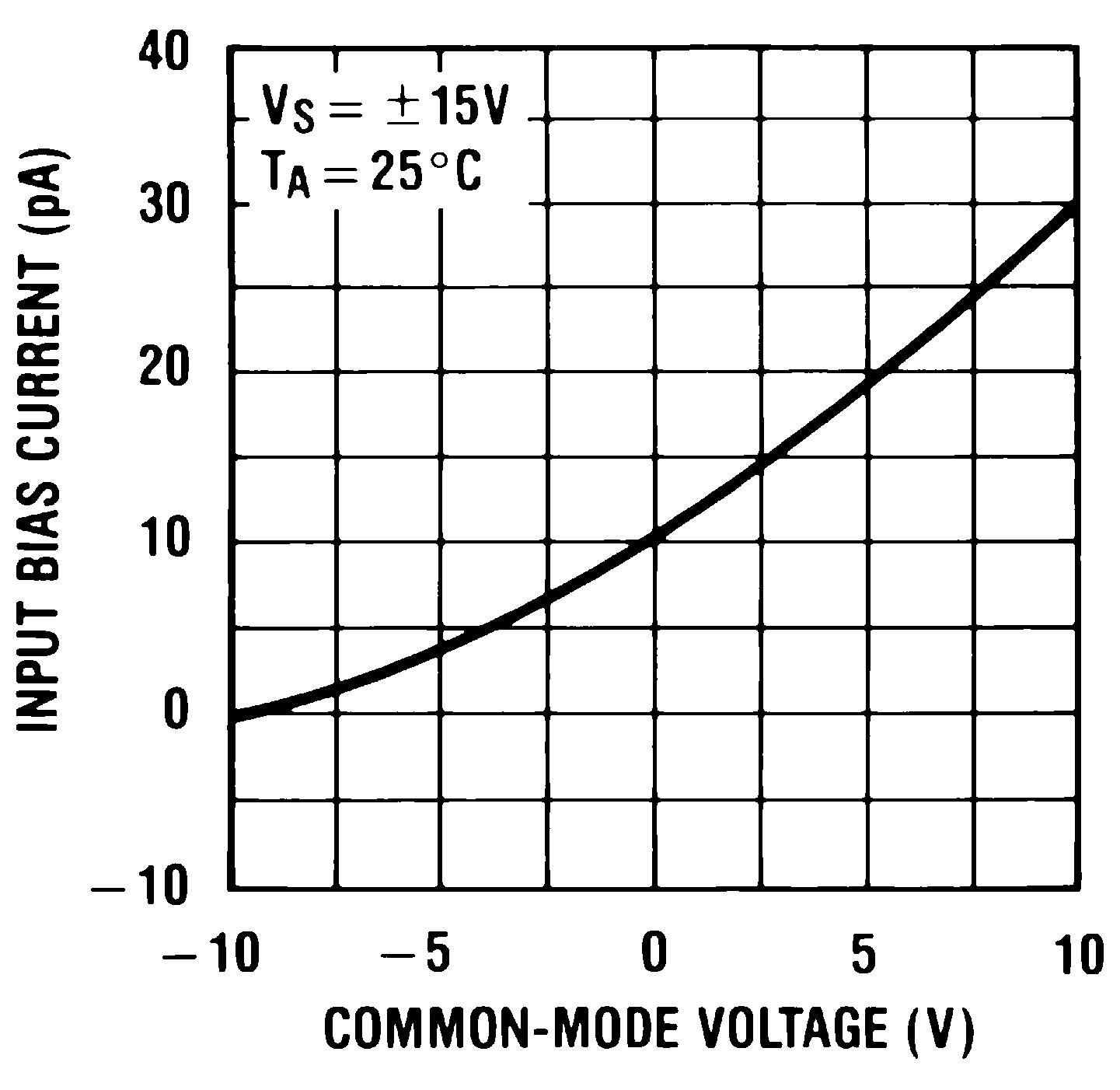
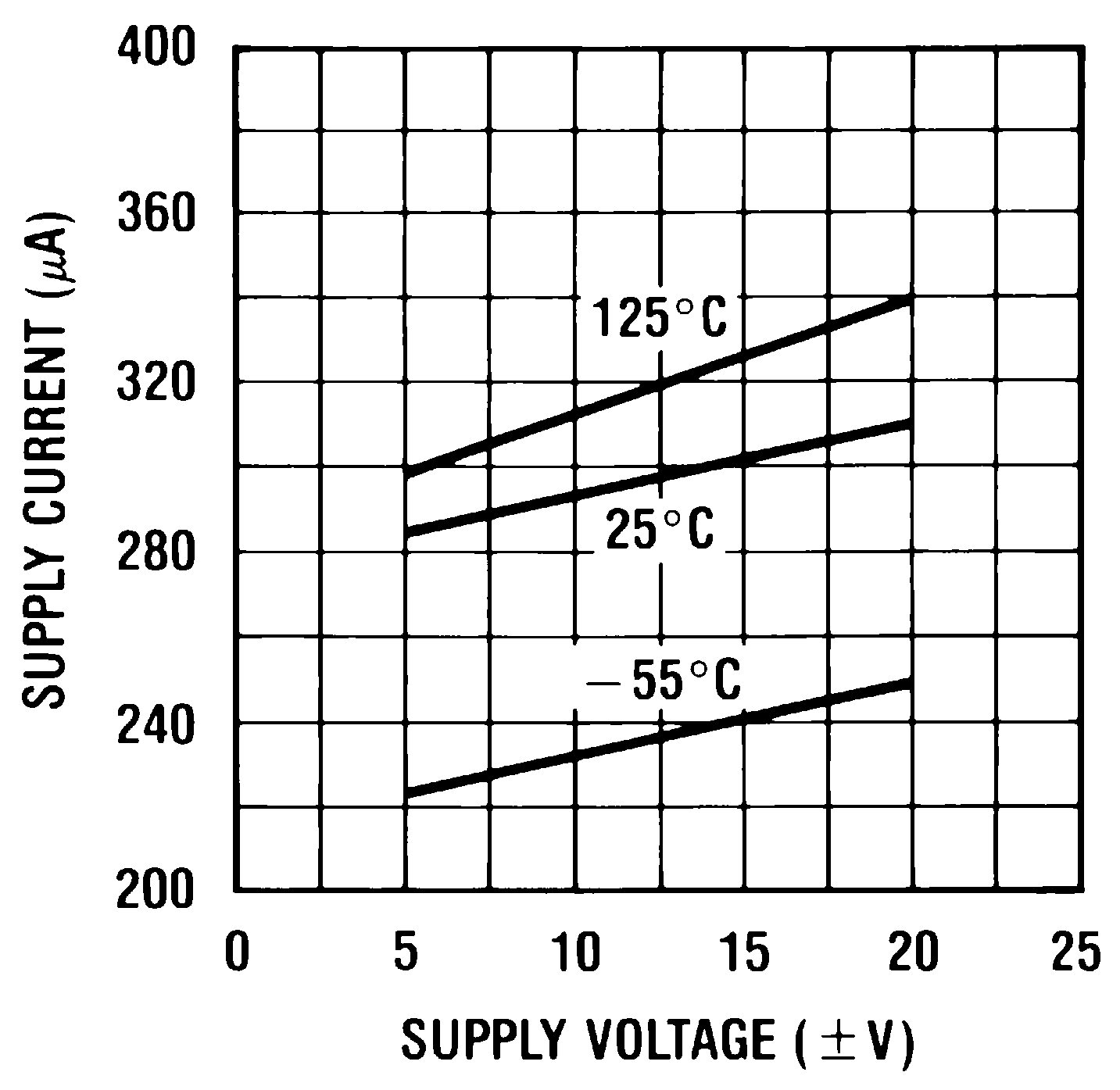
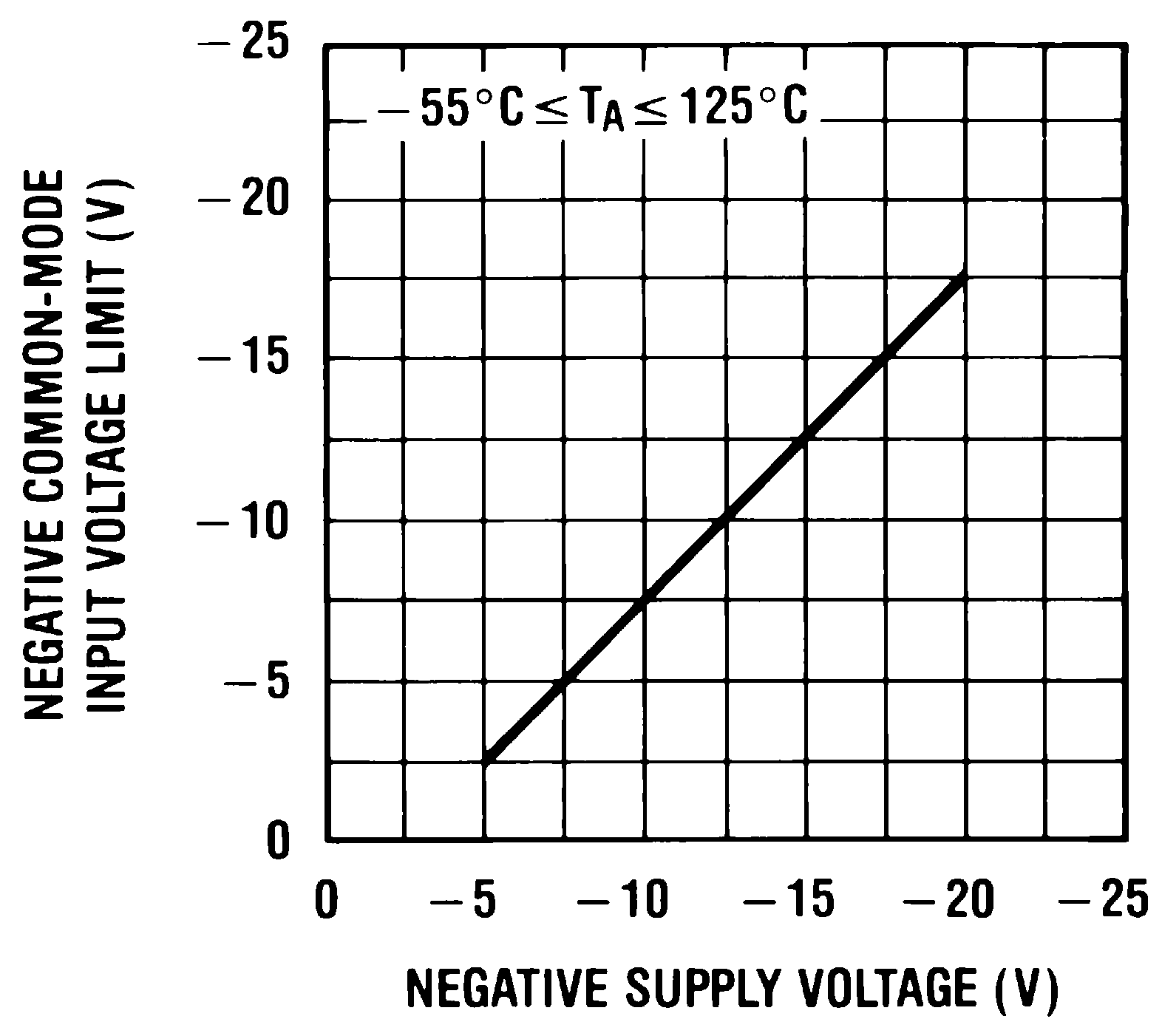
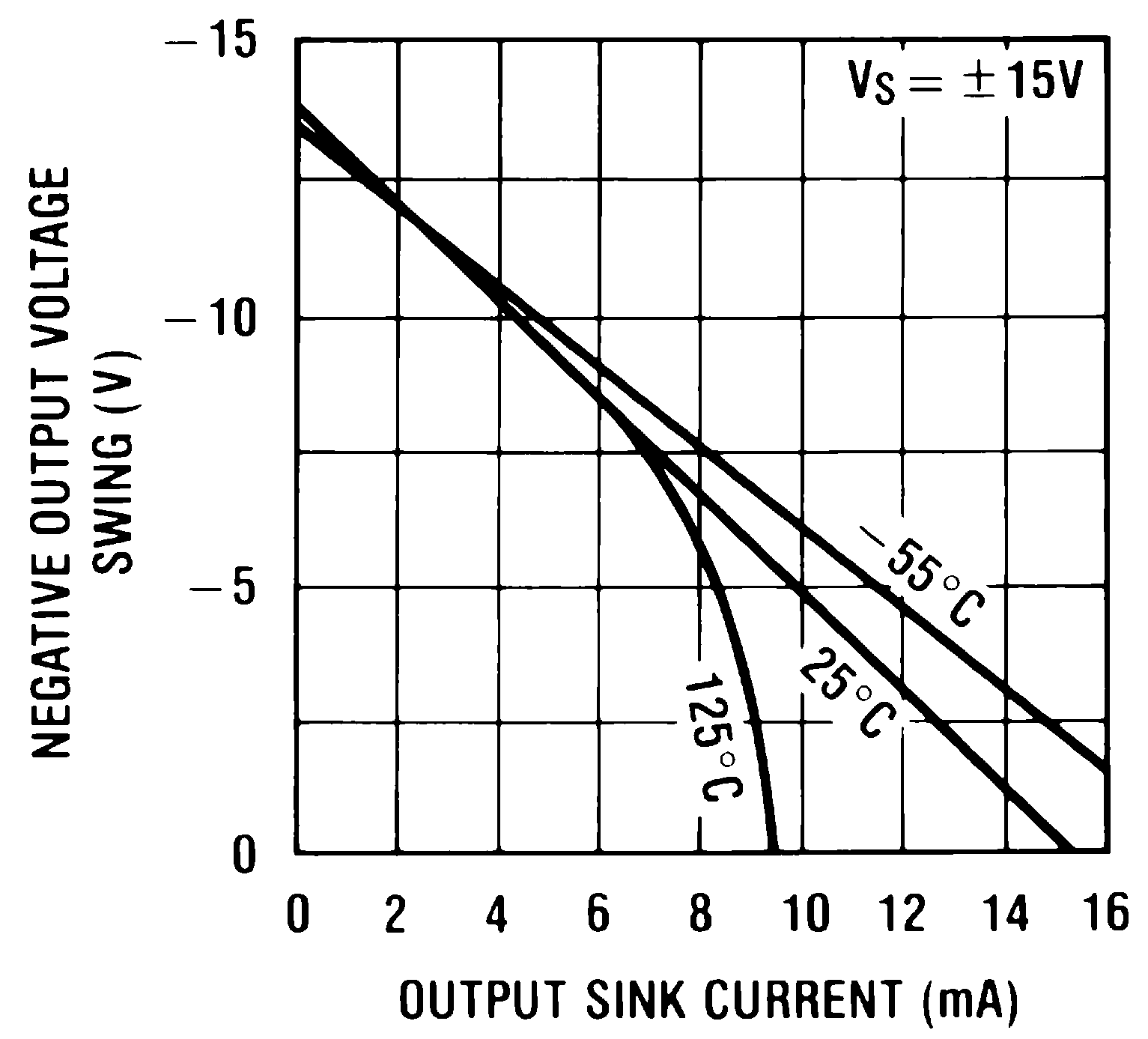
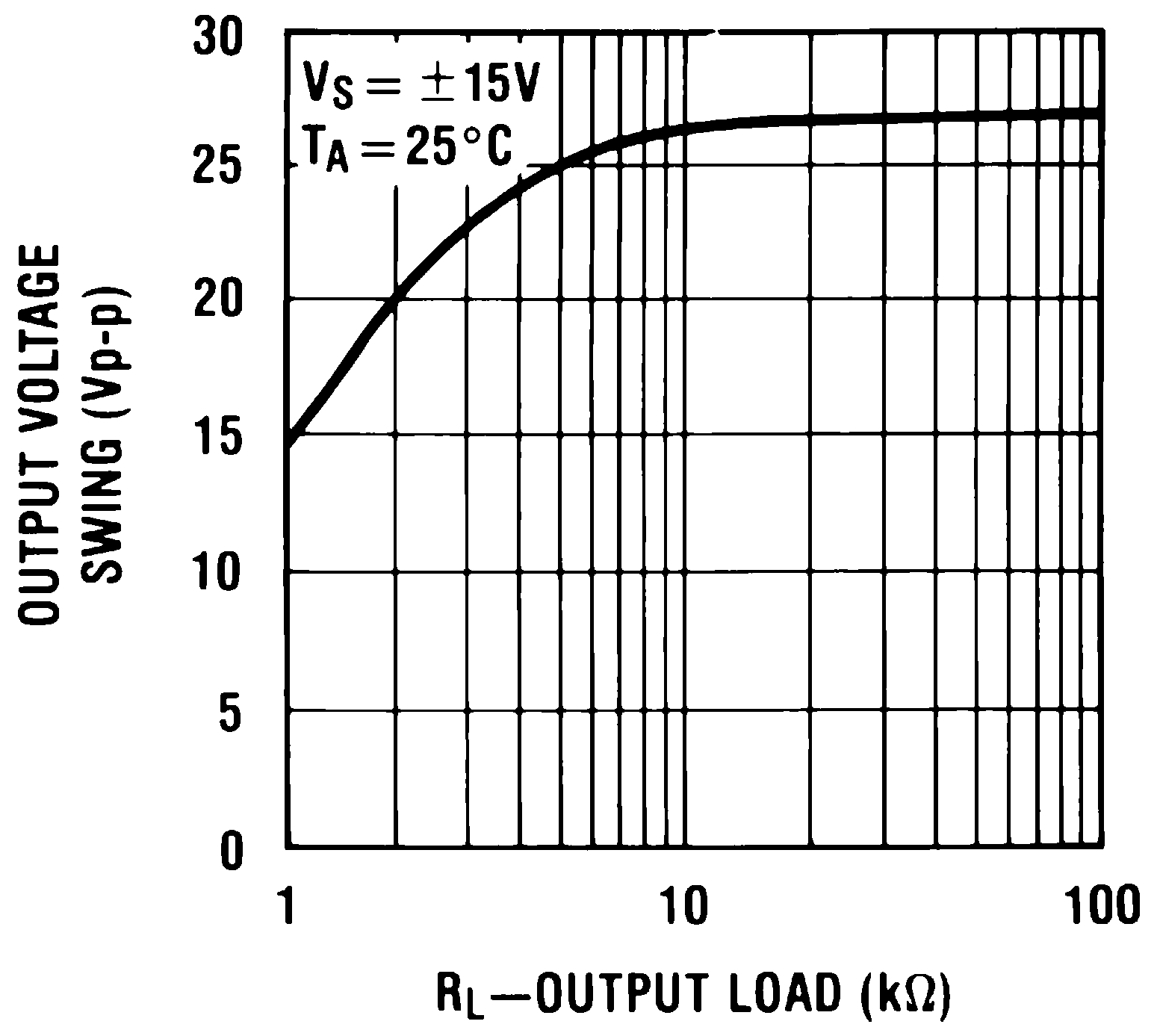
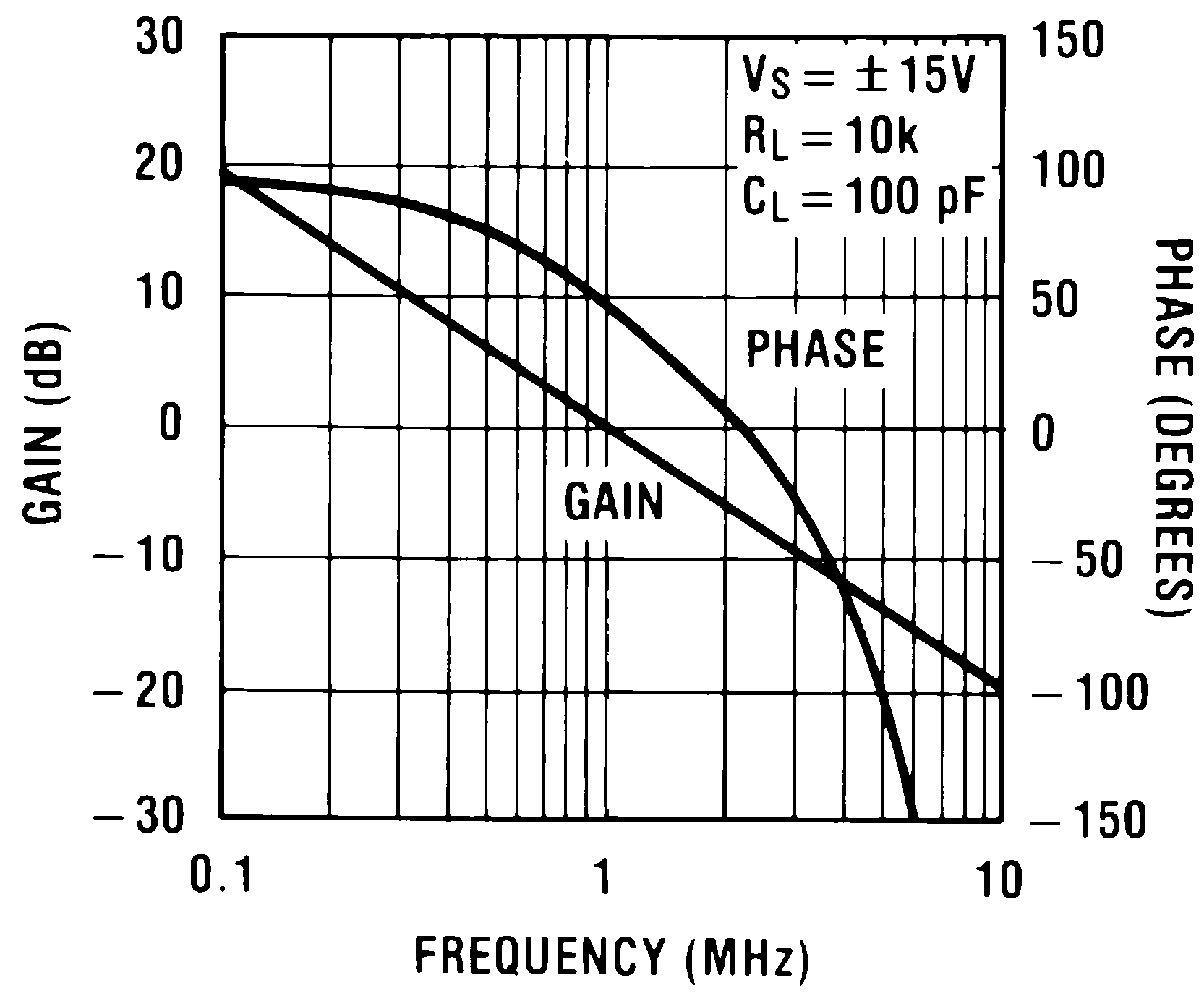
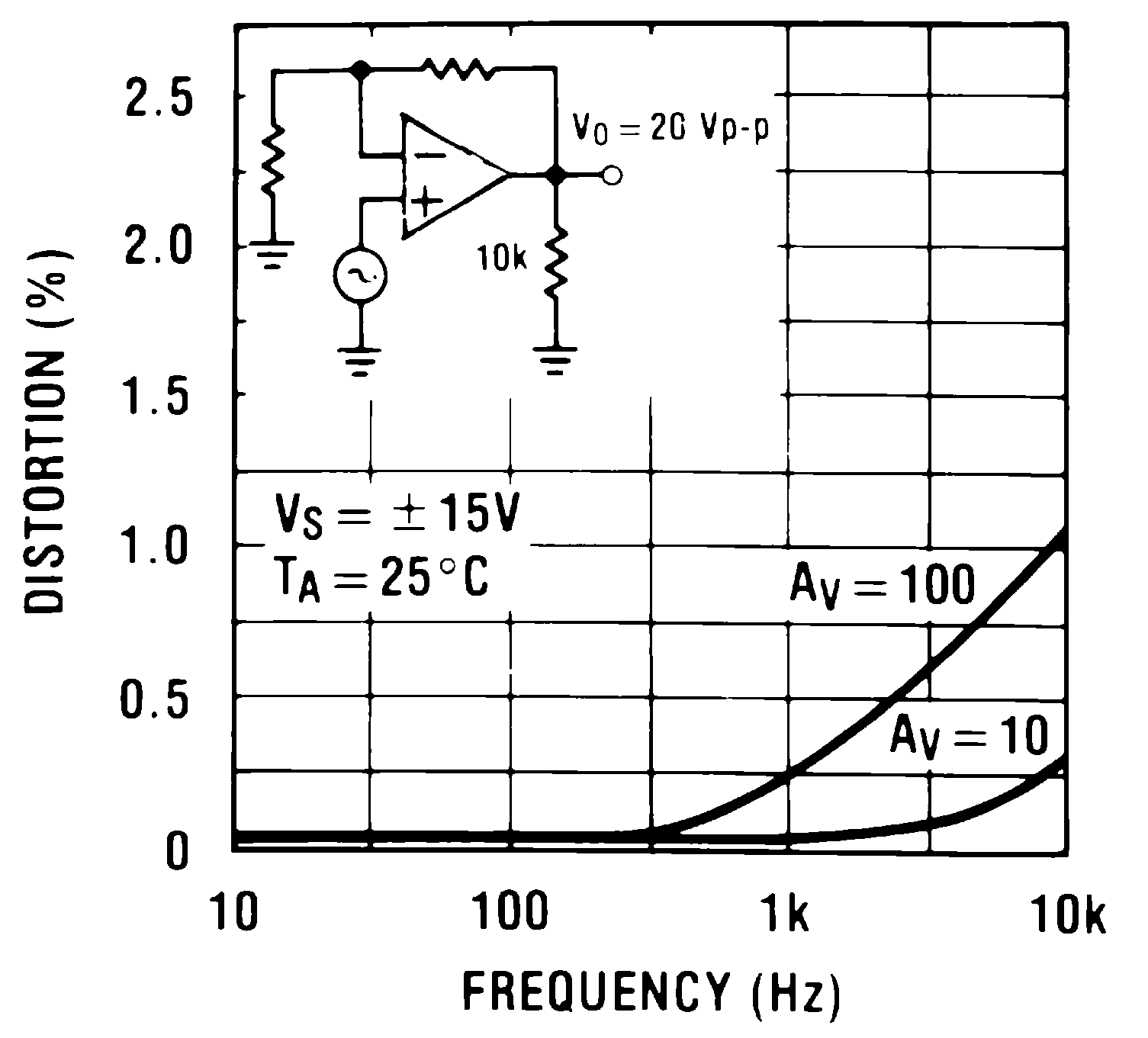
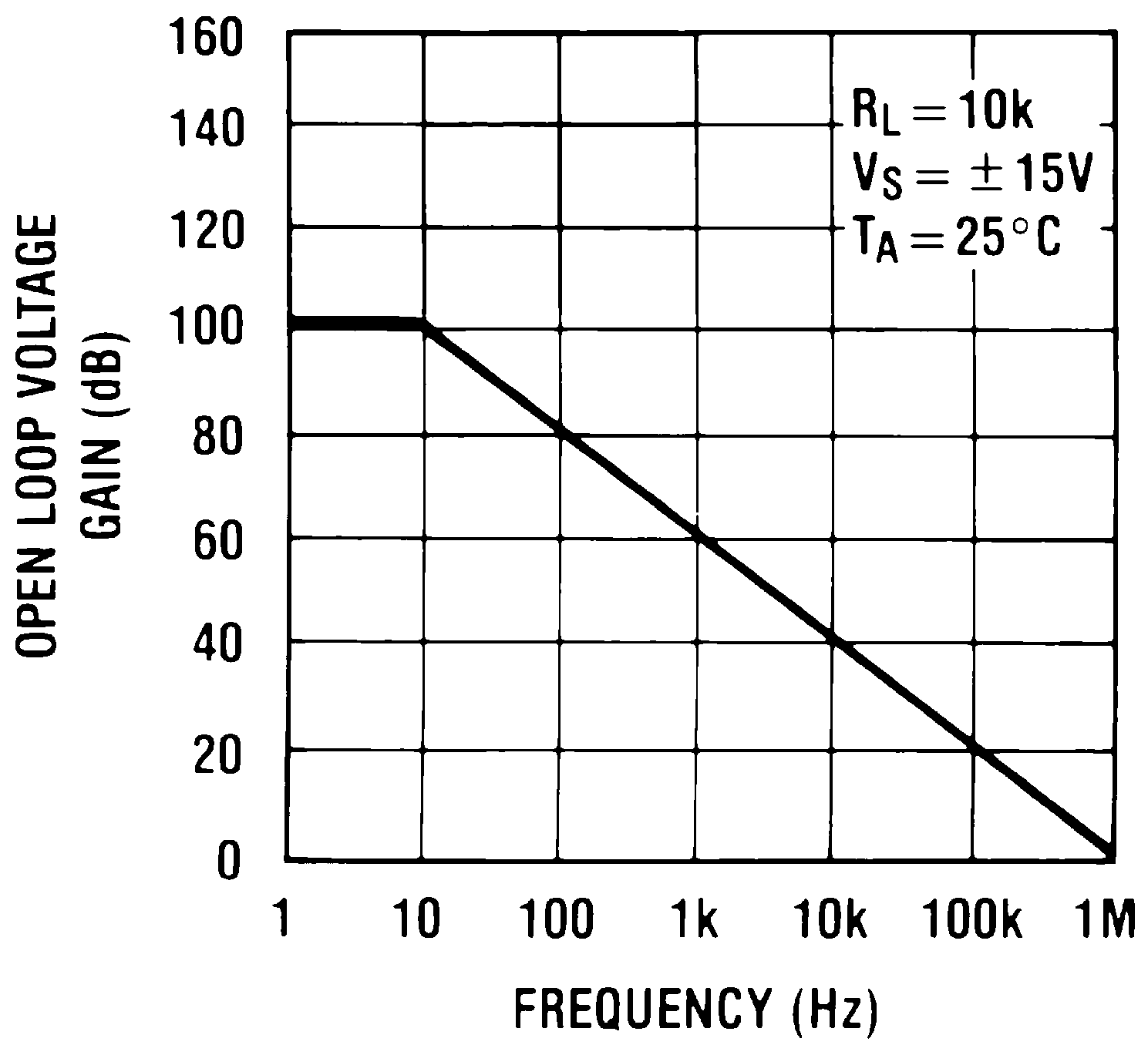
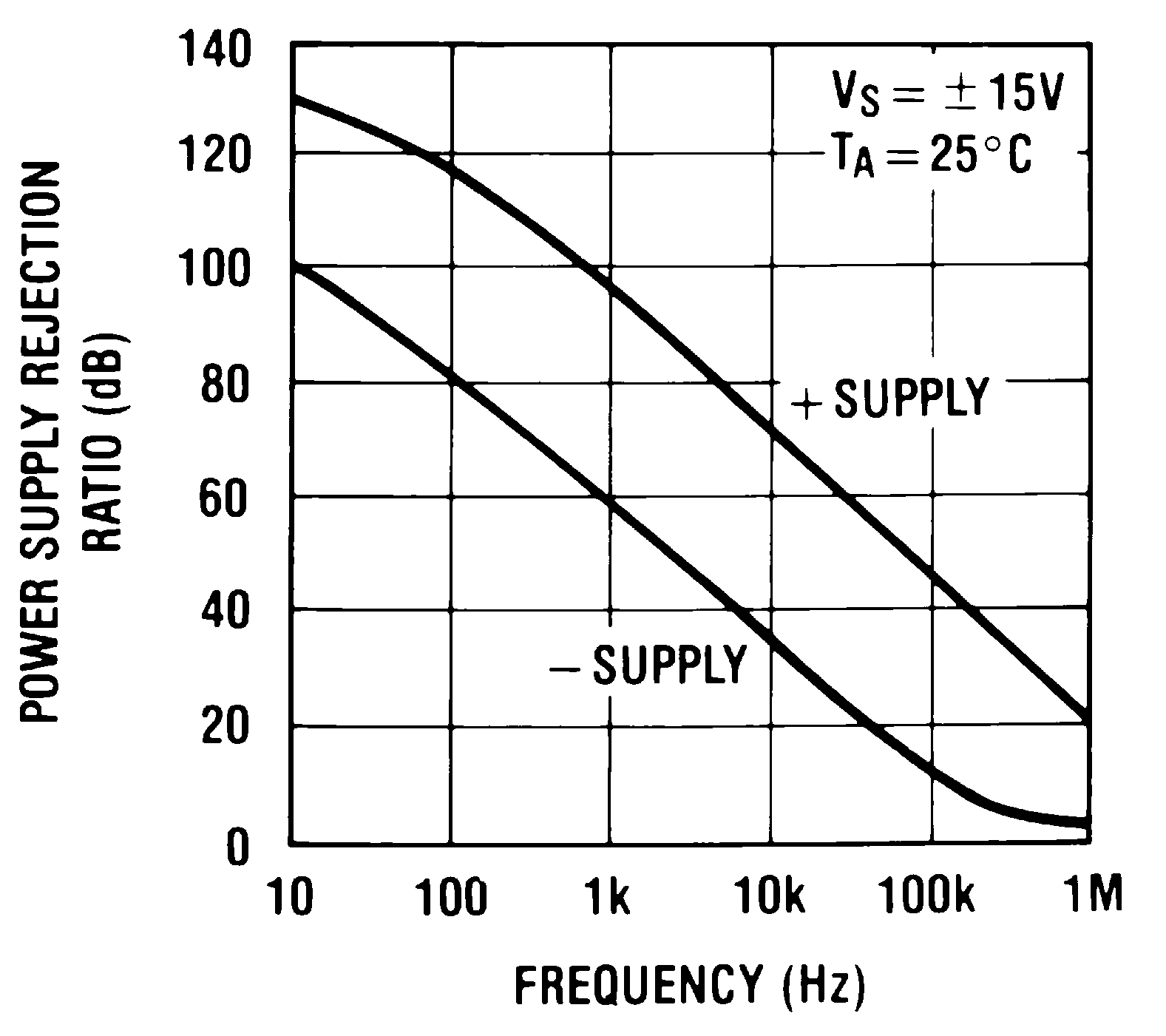
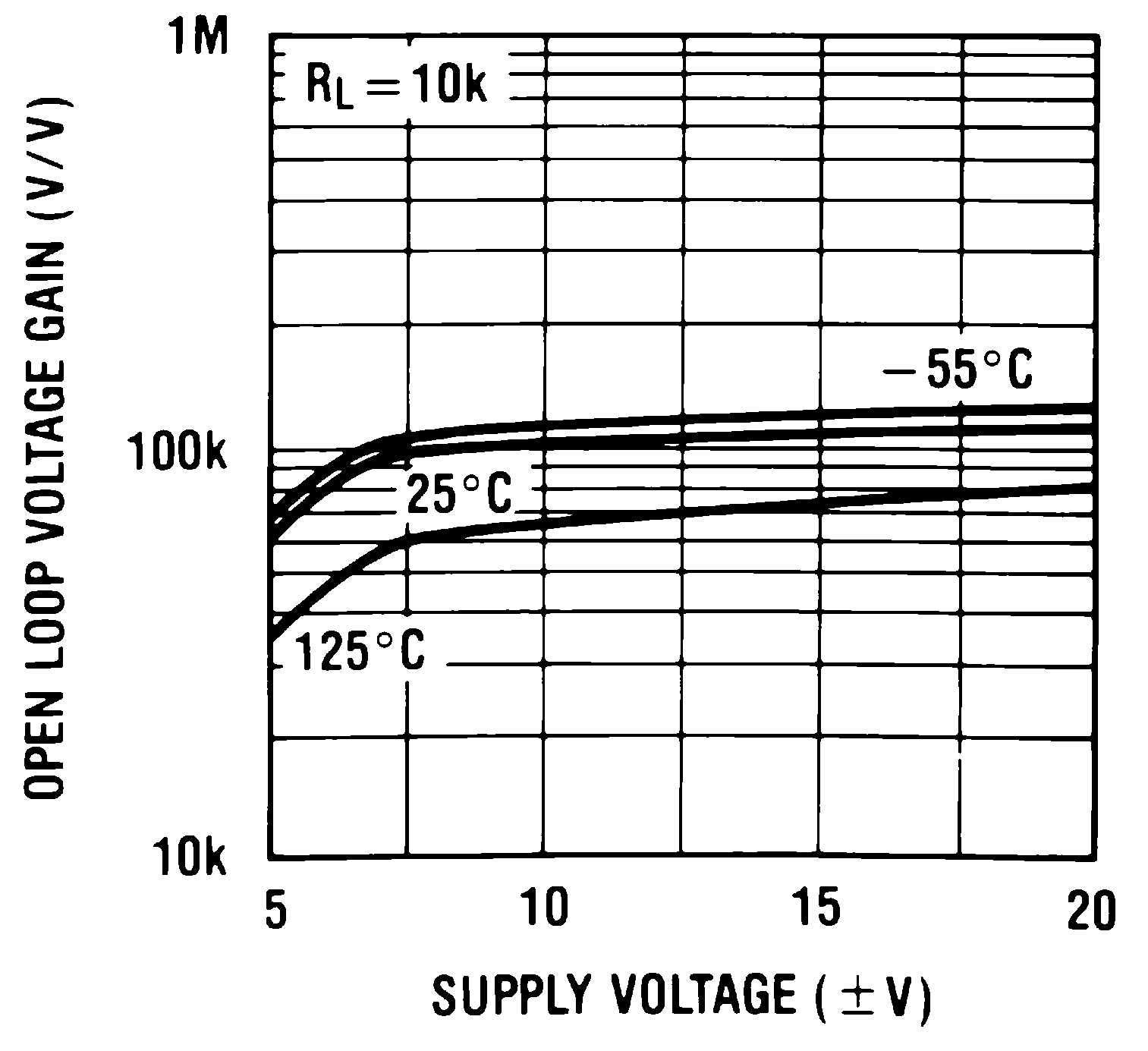
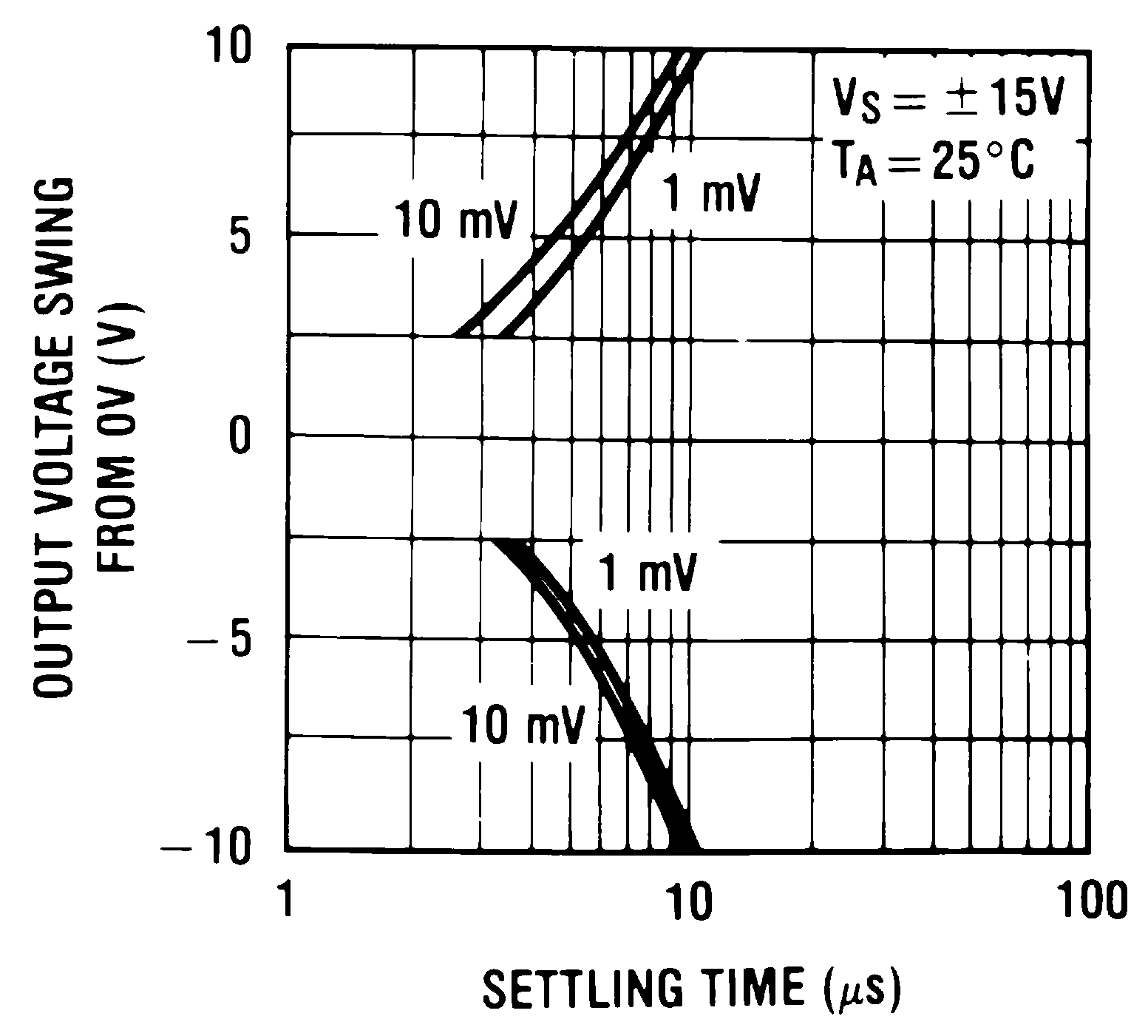
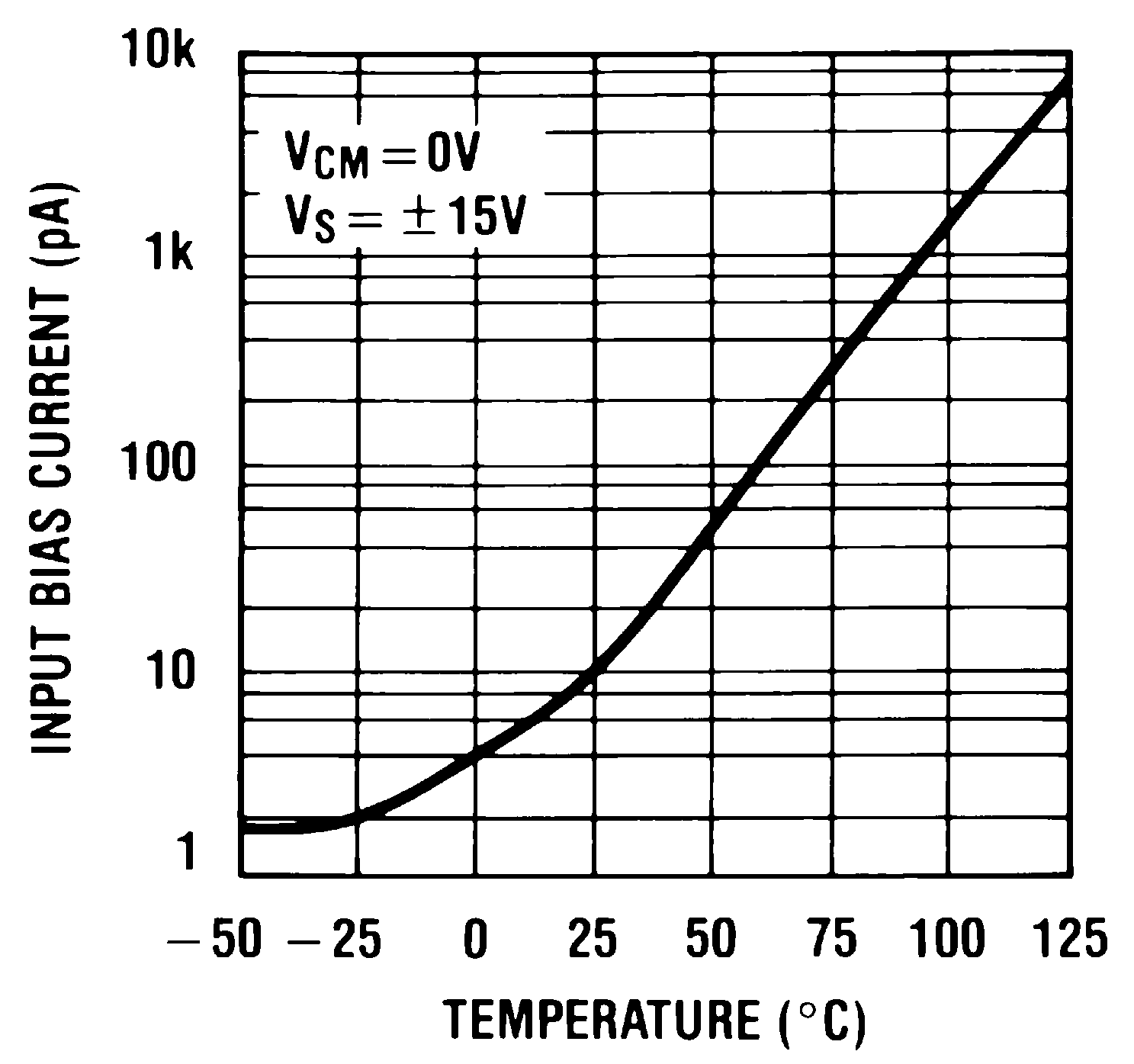
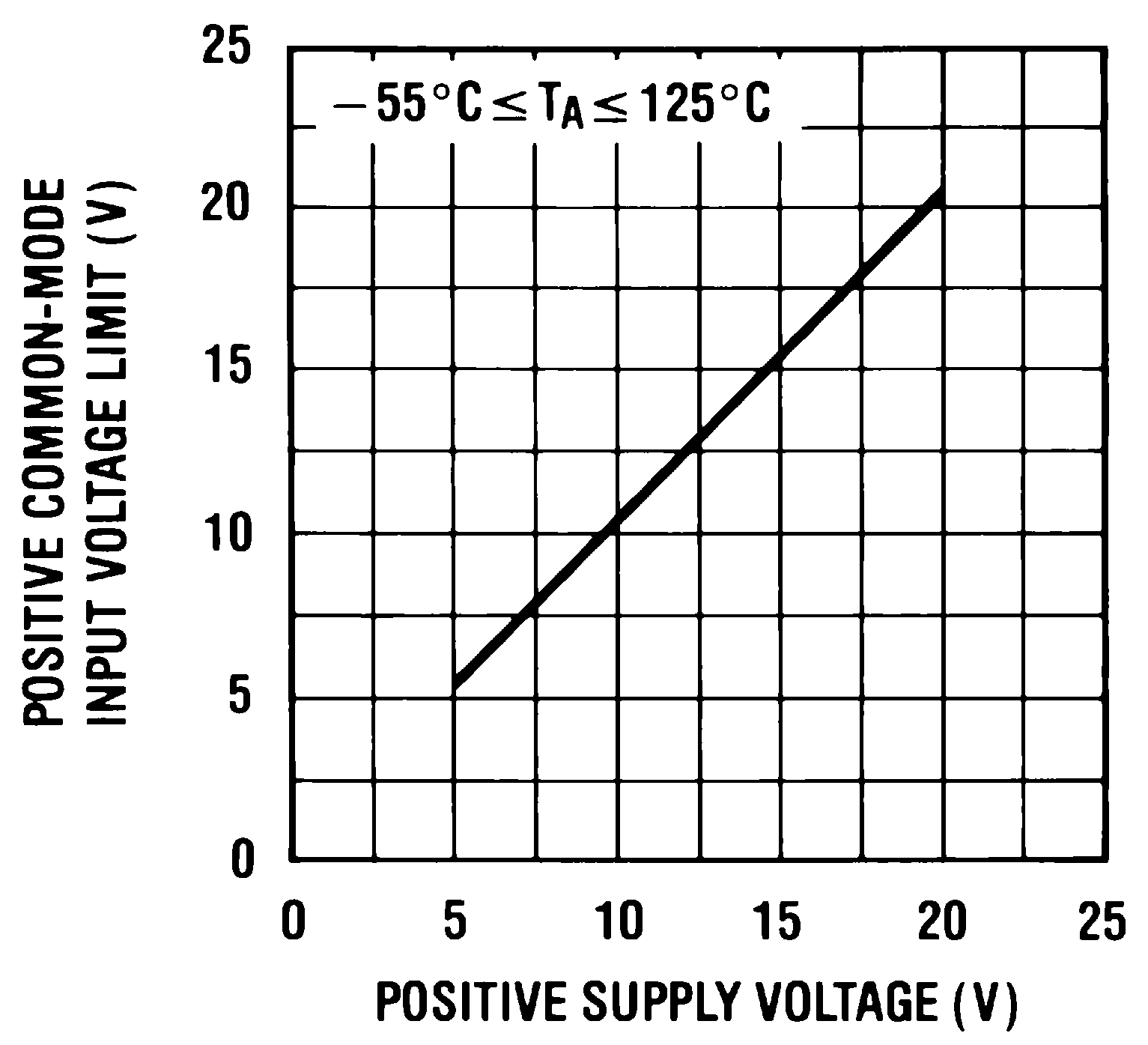
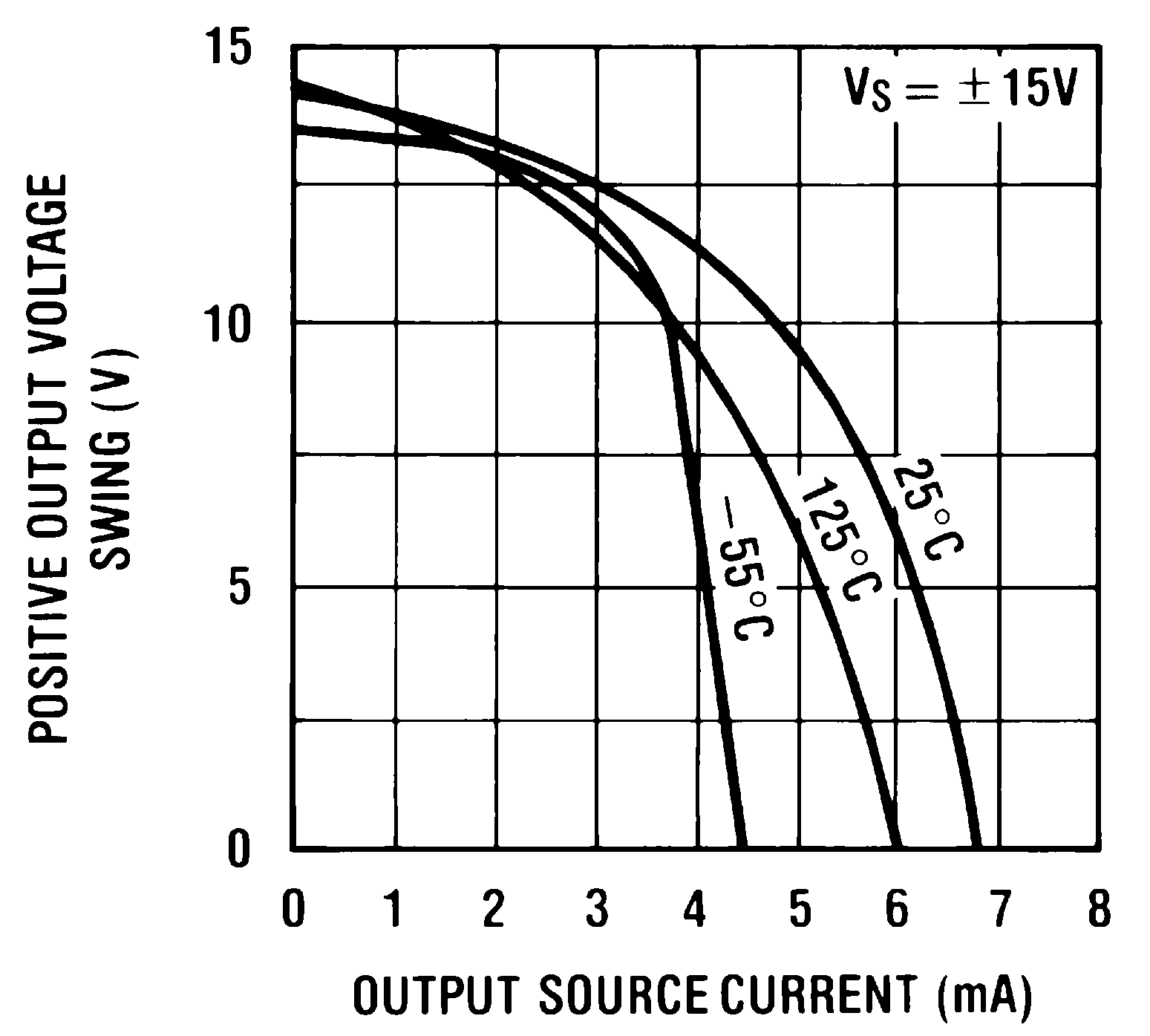
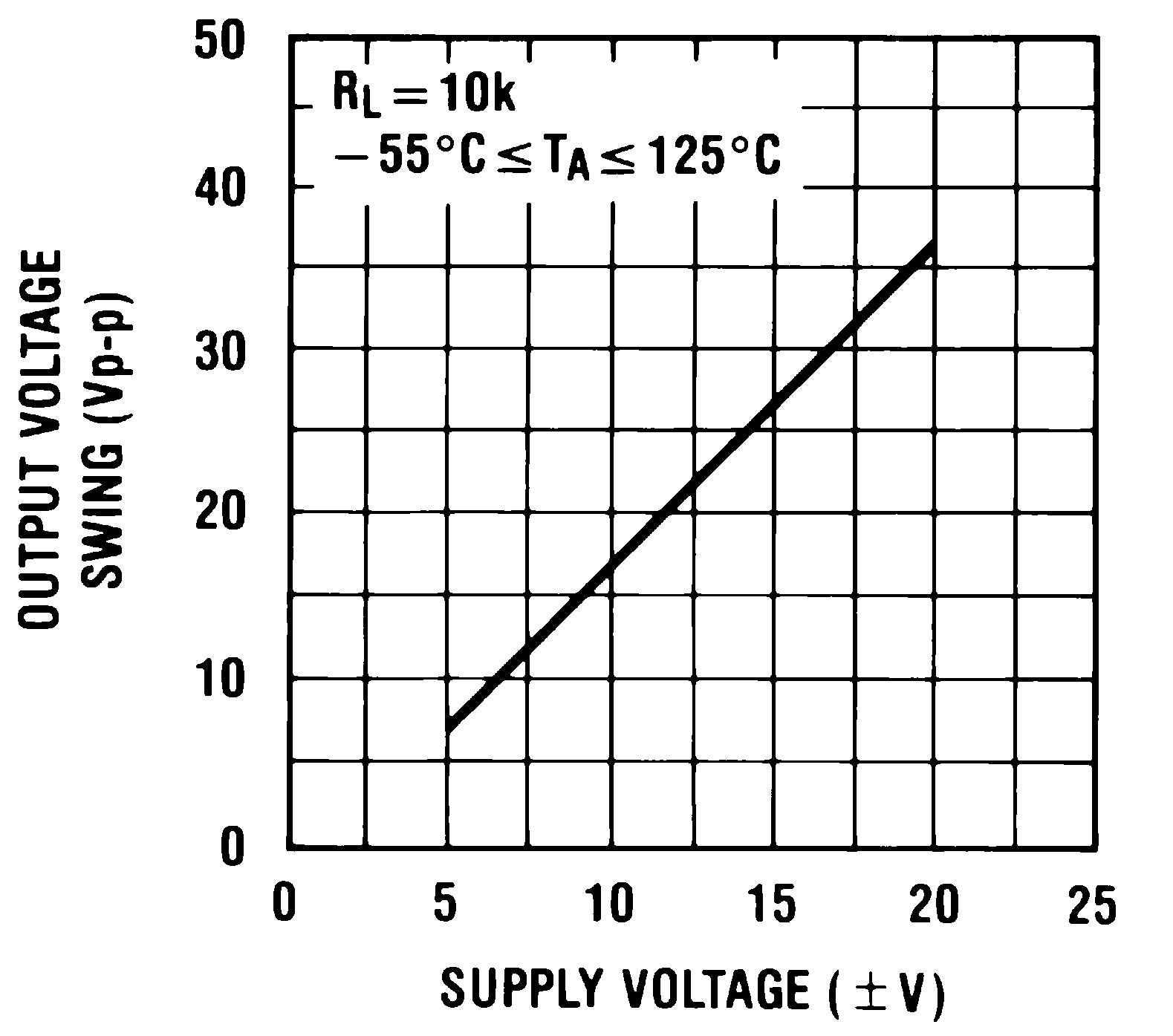
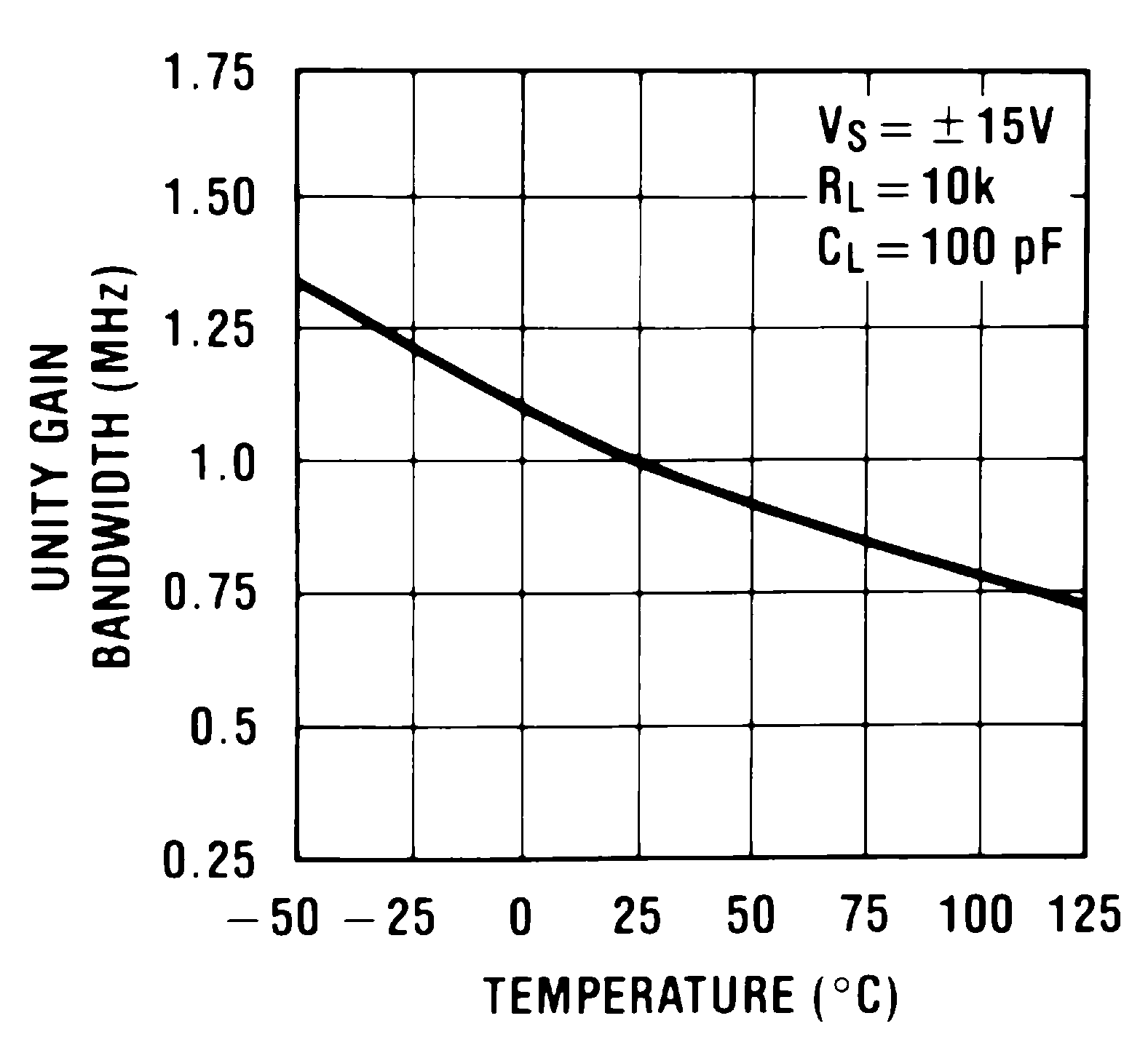
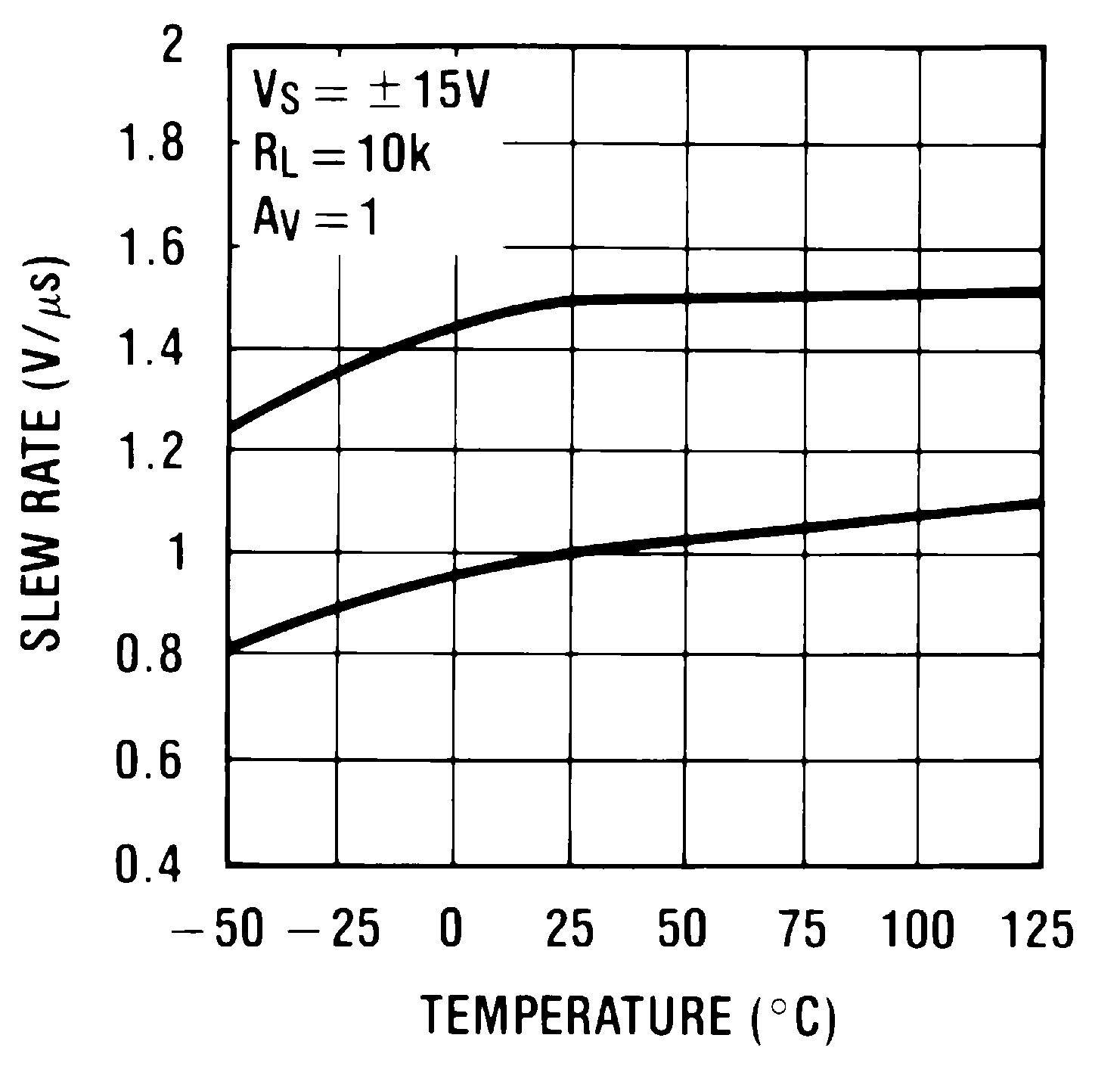
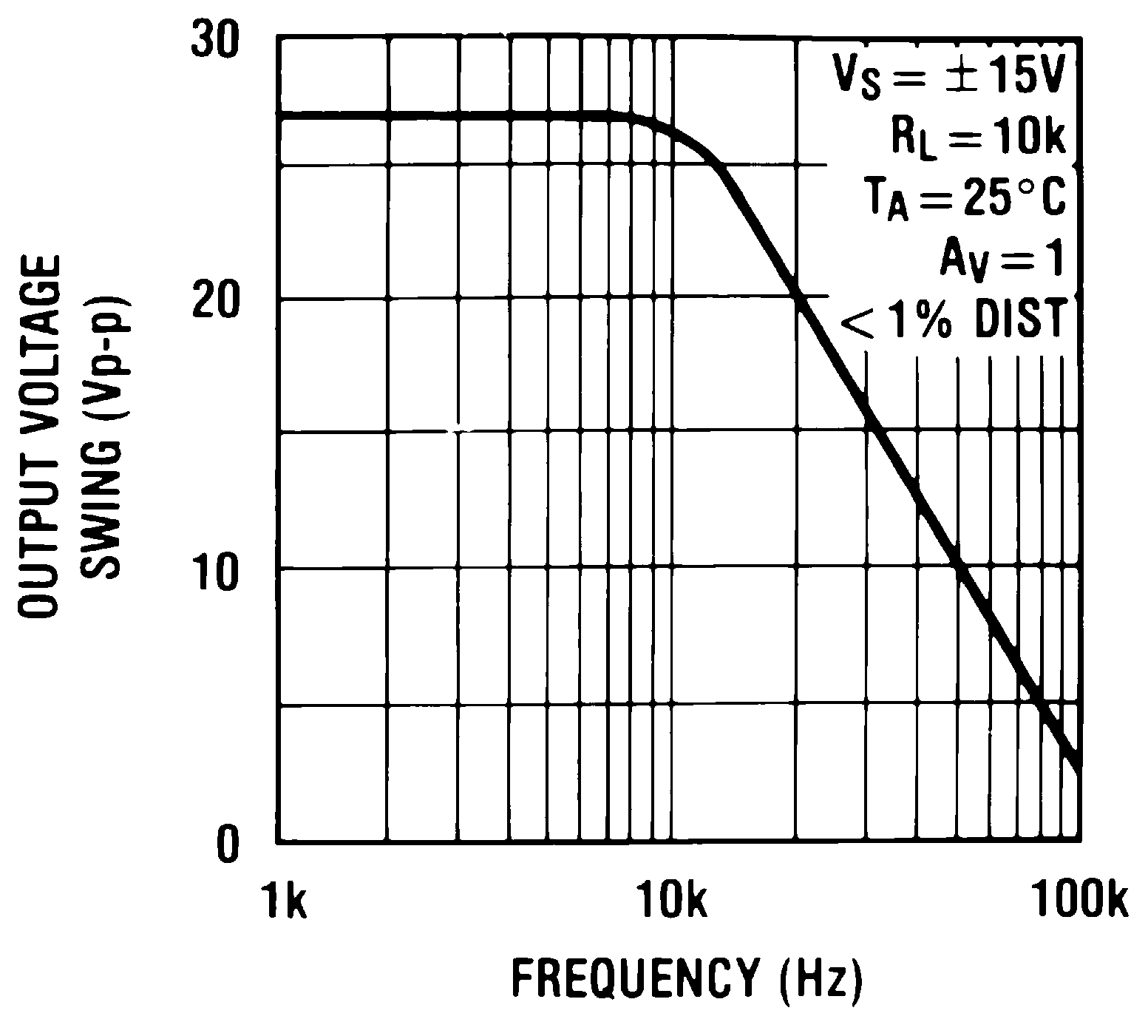
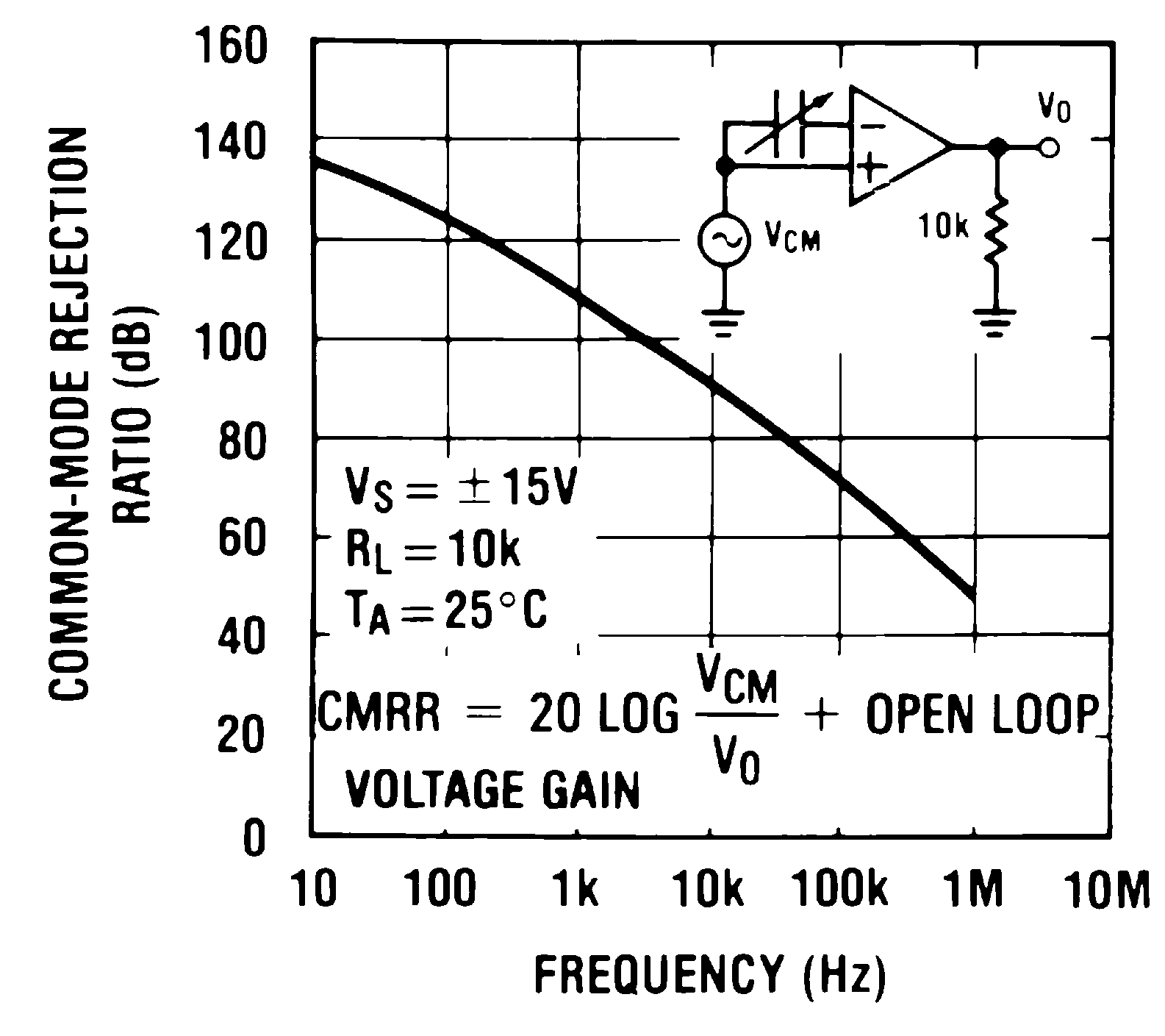
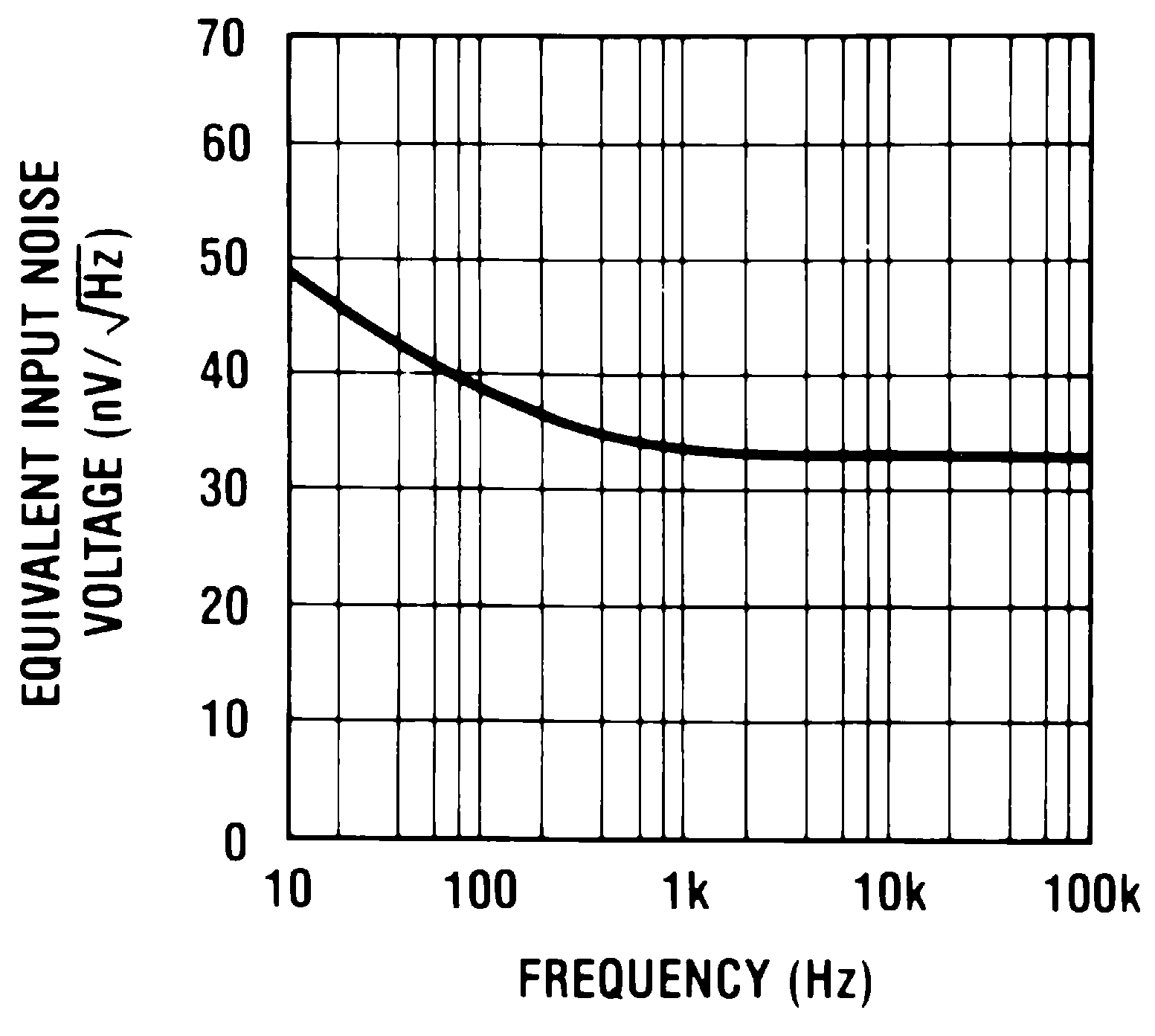
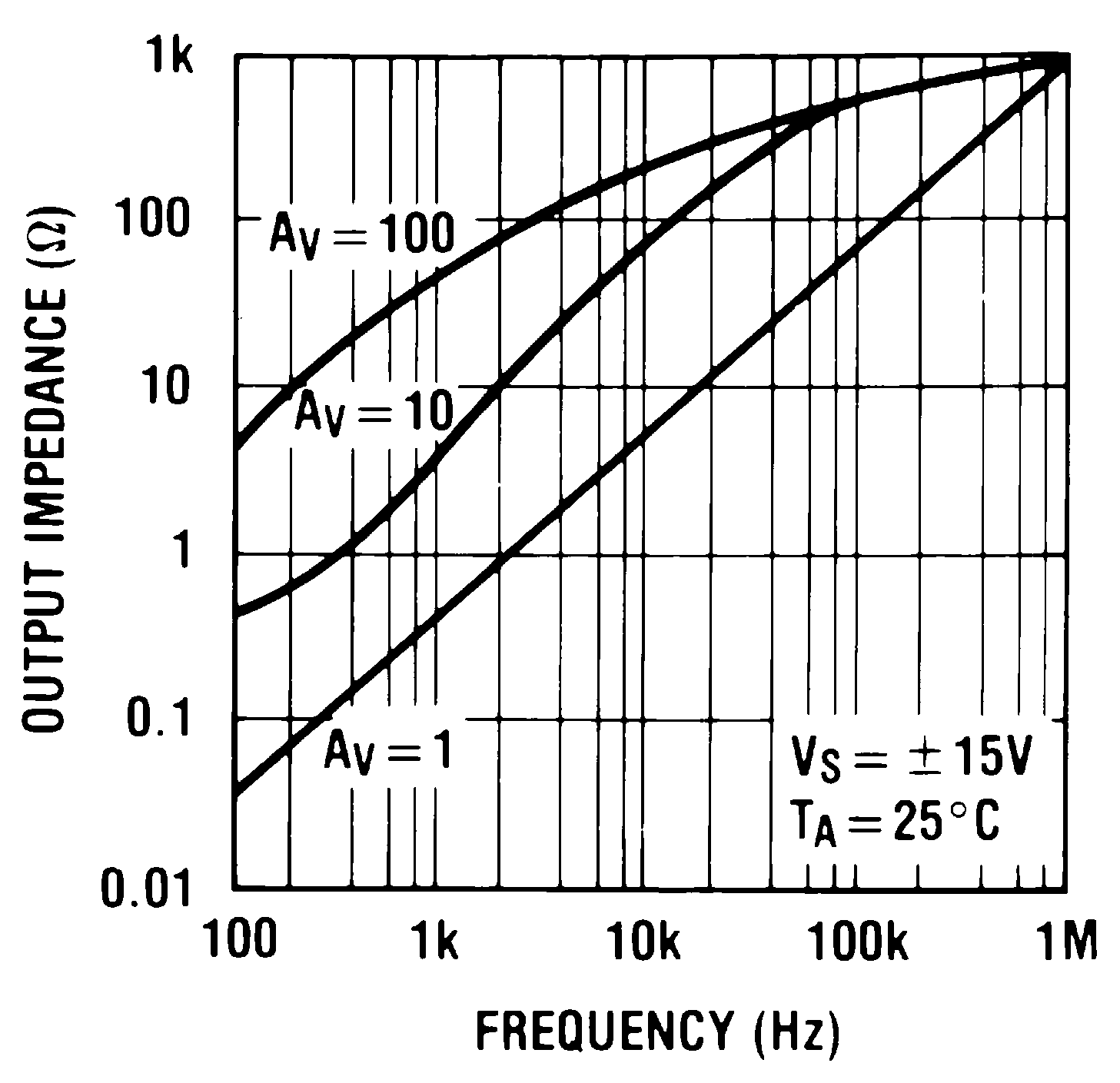
6.7.1 Pulse Response
RL = 10 kΩ, CL = 10 pF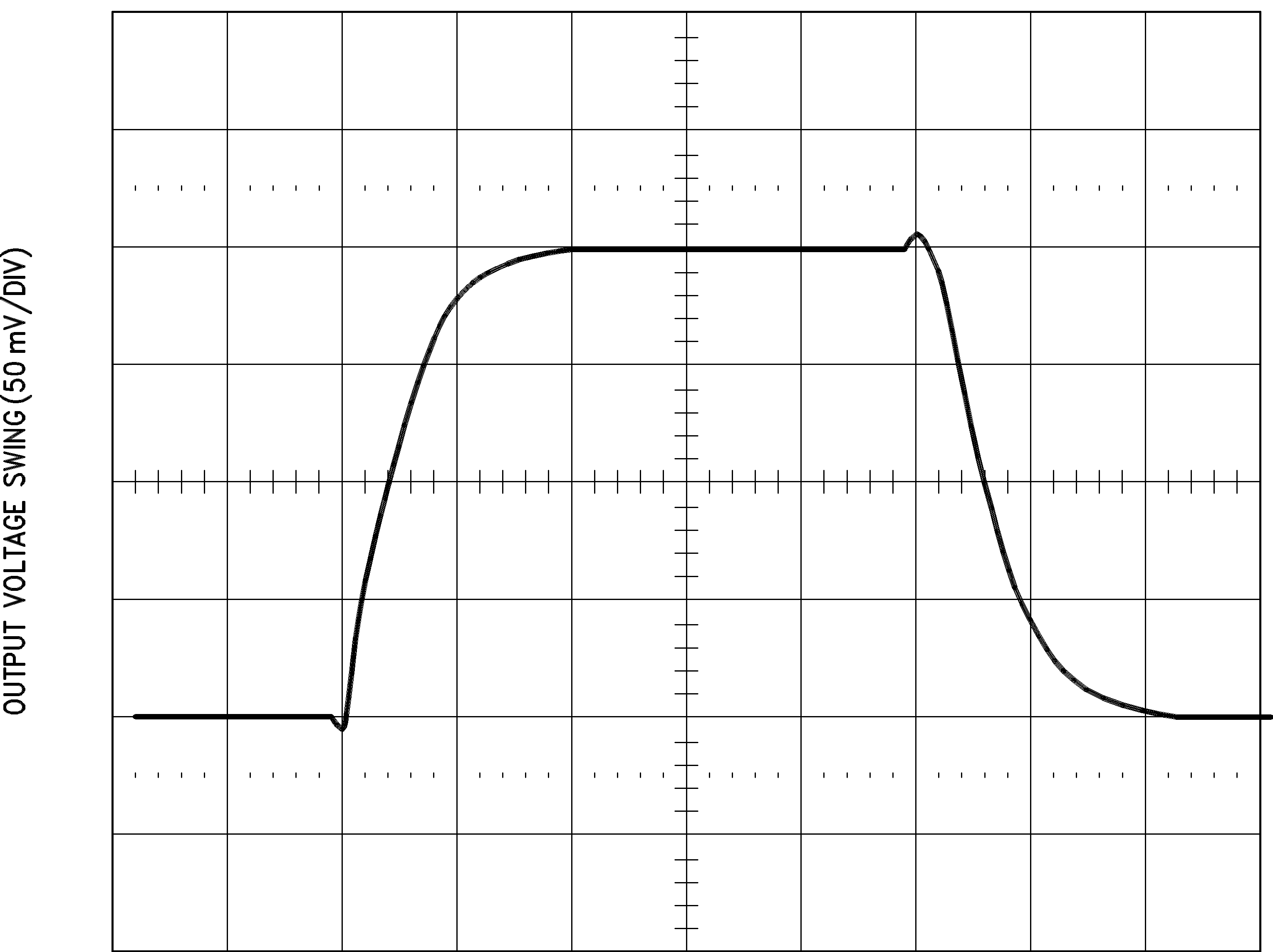 Figure 22. Small Signal Inverting
Figure 22. Small Signal Inverting
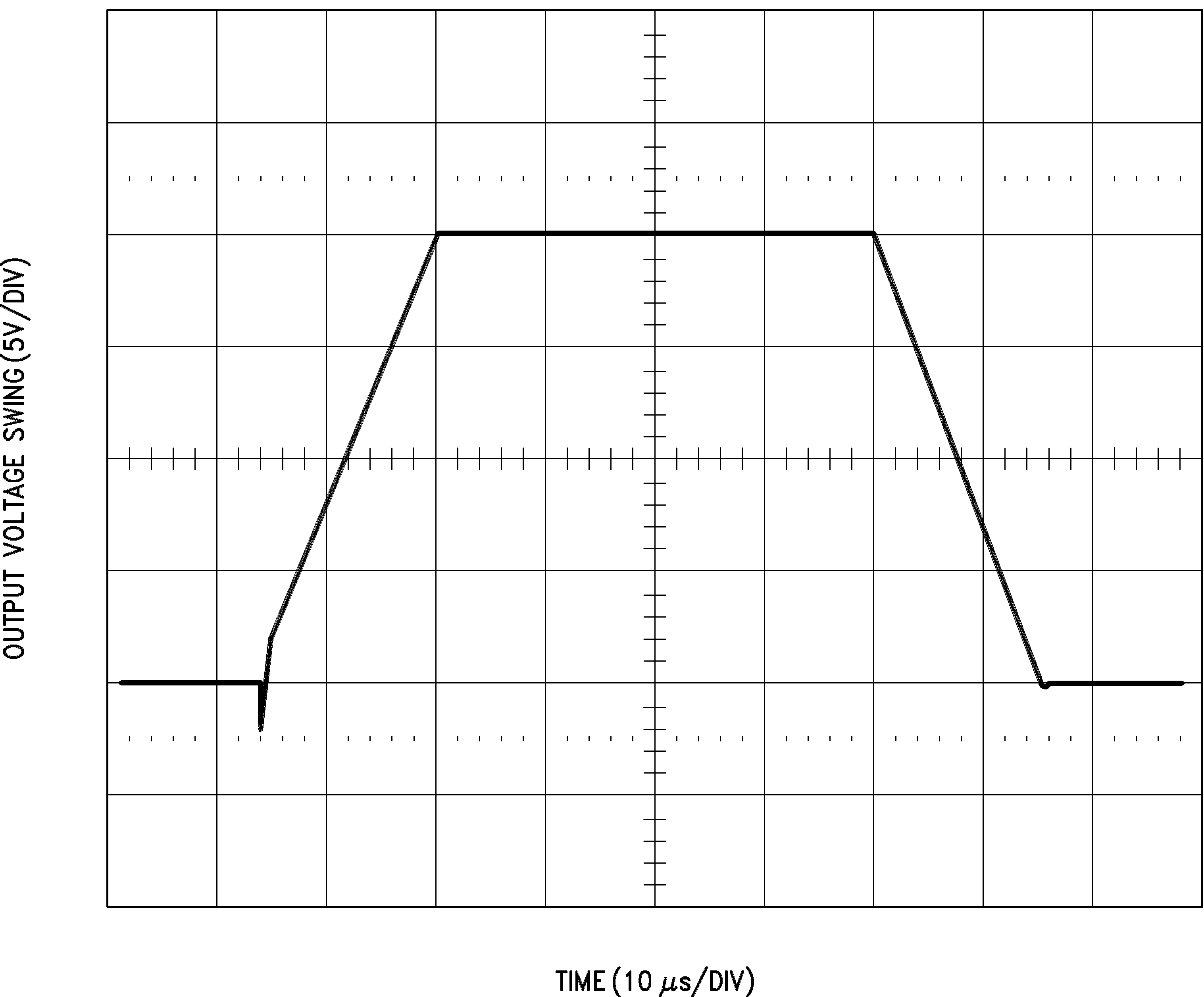 Figure 24. Large Signal Inverting
Figure 24. Large Signal Inverting
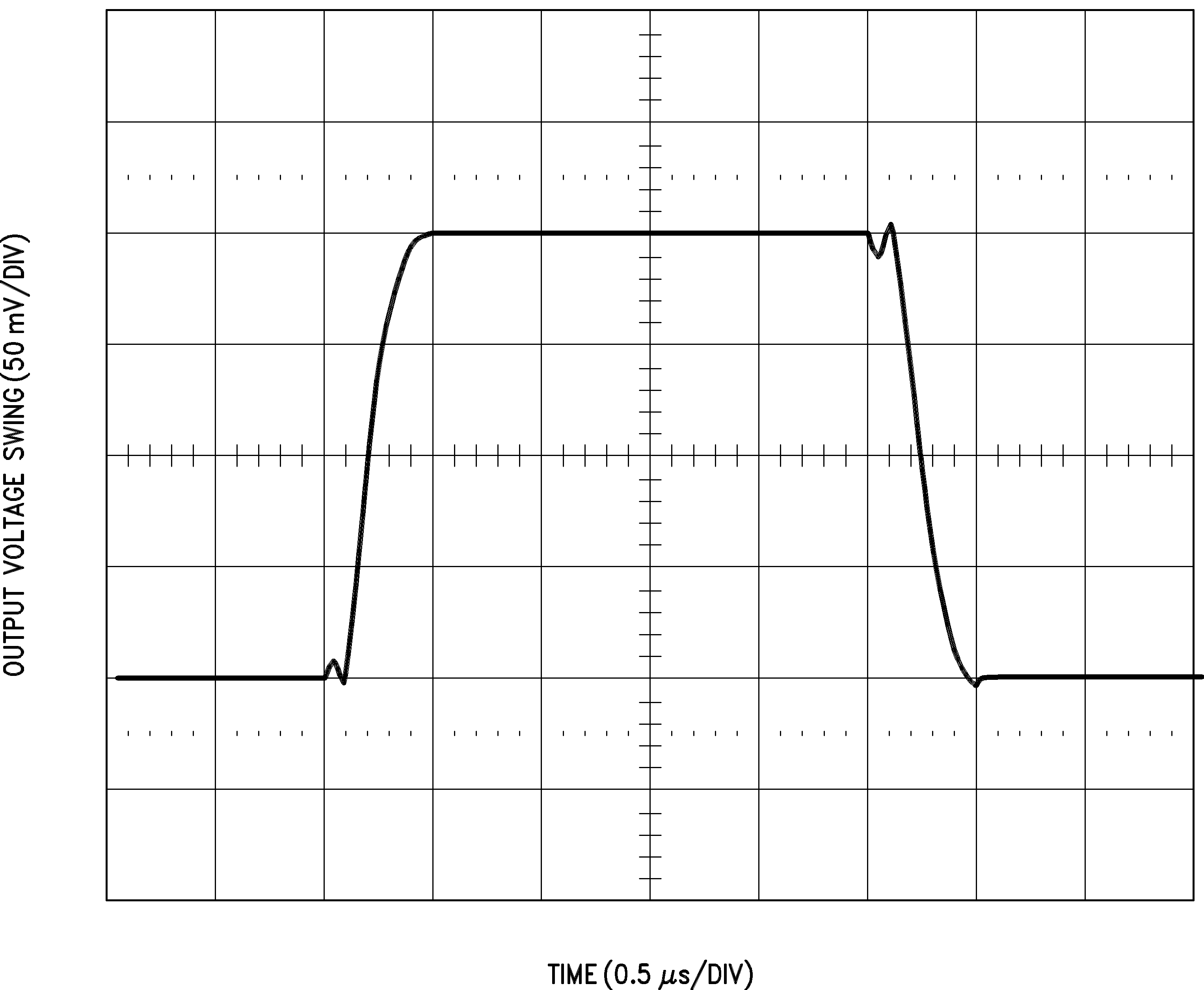 Figure 23. Small Signal Non-Inverting
Figure 23. Small Signal Non-Inverting
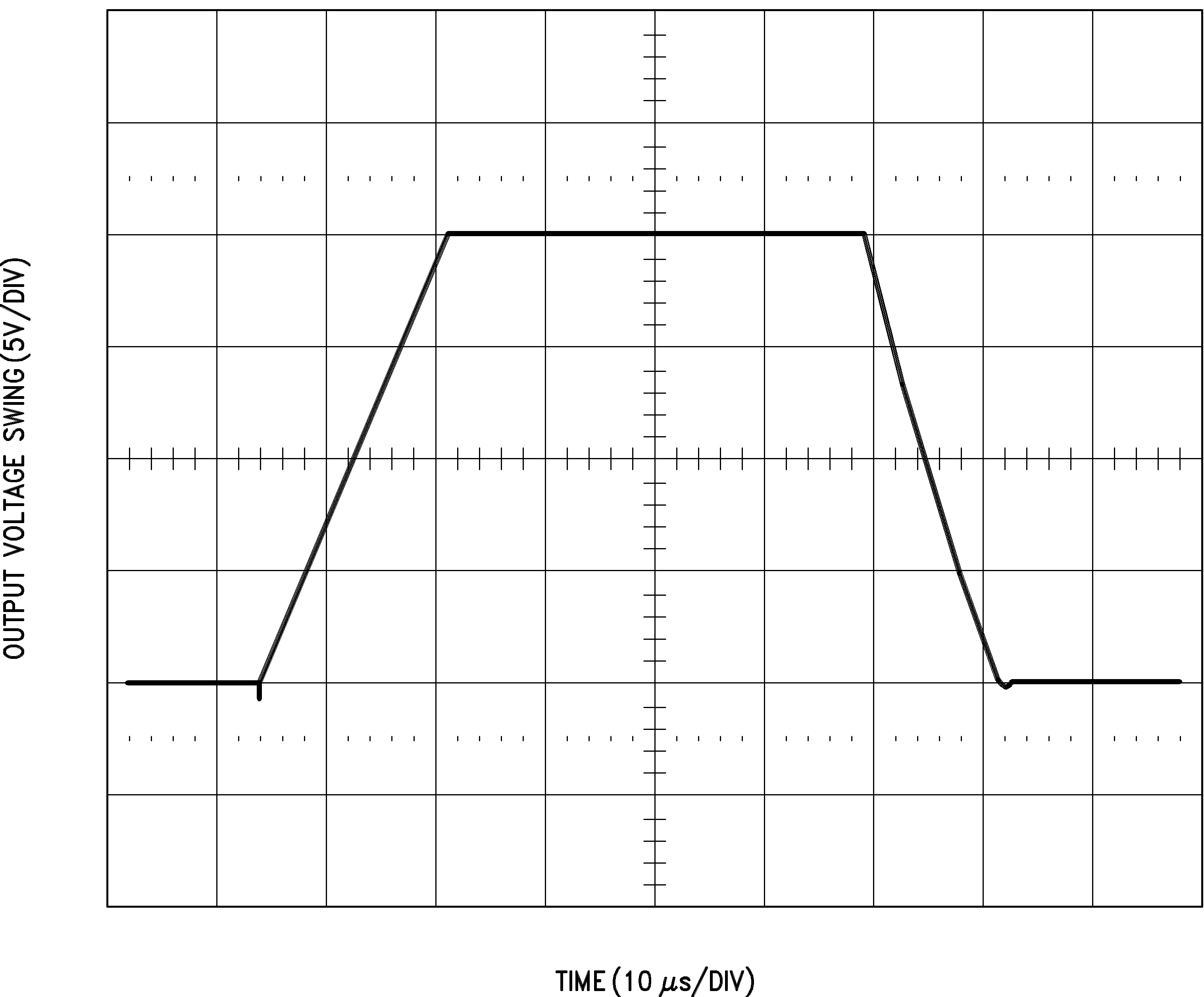 Figure 25. Large Signal Non-Inverting
Figure 25. Large Signal Non-Inverting